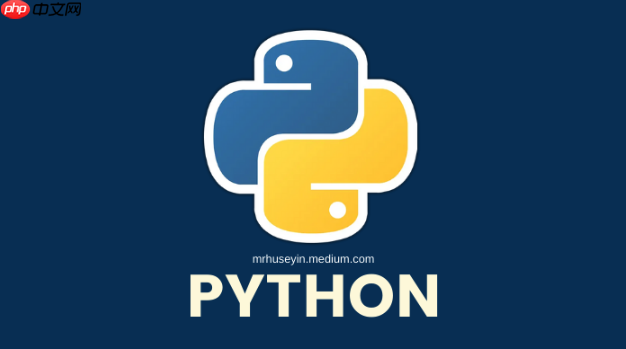子线程异常无法被主线程直接捕获,需在子线程内处理或通过队列、Future等机制传递异常信息。1. 每个线程独立运行,未捕获的异常仅终止该线程;2. 可使用queue.Queue将异常传回主线程;3. 推荐concurrent.futures模块,其Future.result()会重新抛出异常;4. 自定义threading.excepthook(Python 3.8+)可统一记录线程异常;5. 必须主动收集异常,避免静默失败。

在多线程环境下使用 Python 的异常处理时,必须格外小心,因为主线程无法直接捕获子线程中抛出的异常。每个线程是独立执行的,未捕获的异常只会导致该线程终止,而不会影响主线程,这容易造成错误被忽略。
Python 中每个线程运行在独立的调用栈上,主线程 try-except 无法捕获子线程内的异常:
为了在主线程感知子线程的异常状态,可以借助共享结构传递错误信息:
queue.Queue 将异常对象从子线程发送回主线程示例:
立即学习“Python免费学习笔记(深入)”;
import threading
import queue
<p>def worker(q):
try:</p><h1>模拟任务</h1><pre class="brush:php;toolbar:false;"><pre class="brush:php;toolbar:false;"> result = 1 / 0
q.put(('success', result))
except Exception as e:
q.put(('error', e))q = queue.Queue() t = threading.Thread(target=worker, args=(q,)) t.start() t.join()
status, value = q.get() if status == 'error': print(f"子线程出错: {value}")
推荐使用 concurrent.futures 模块替代原始 threading,它能自动封装异常并提供统一接口:
Future 对象的 result() 方法会重新抛出异常示例:
立即学习“Python免费学习笔记(深入)”;
from concurrent.futures import ThreadPoolExecutor
import time
<p>def task():
time.sleep(1)
raise ValueError("出错了")</p><p>with ThreadPoolExecutor() as executor:
future = executor.submit(task)
try:
future.result()
except ValueError as e:
print(f"捕获到子线程异常: {e}")
为避免遗漏异常,可设置线程级别的异常钩子:
sys.excepthook 不适用于线程,应使用 threading.excepthook(Python 3.8+)threading.excepthook 来统一记录未捕获的线程异常示例:
立即学习“Python免费学习笔记(深入)”;
import threading
import sys
<p>def custom_excepthook(args):
print(f"线程异常: {args.exc_type.<strong>name</strong>}: {args.exc_value}")</p><h1>设置线程异常钩子</h1><p>threading.excepthook = custom_excepthook</p><p>def bad_task():
raise RuntimeError("测试异常")</p><p>t = threading.Thread(target=bad_task)
t.start()
t.join() # 触发 custom_excepthook
基本上就这些。只要记得异常不会跨线程传播,主动收集和上报错误,就能有效避免多线程中“静默失败”的陷阱。
以上就是Python 异常处理在多线程环境中的注意事项的详细内容,更多请关注php中文网其它相关文章!

每个人都需要一台速度更快、更稳定的 PC。随着时间的推移,垃圾文件、旧注册表数据和不必要的后台进程会占用资源并降低性能。幸运的是,许多工具可以让 Windows 保持平稳运行。

Copyright 2014-2025 https://www.php.cn/ All Rights Reserved | php.cn | 湘ICP备2023035733号